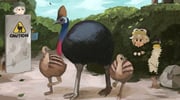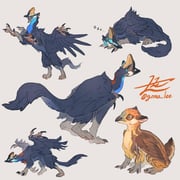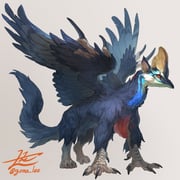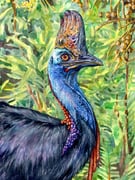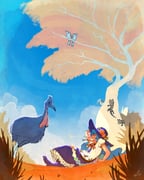cassowary
Latin: Casuarius sp.
Japanese: ヒクイドリ hikuidori
Cassowaries are ratites (flightless birds without a keel on their sternum bone, a group which includes the emu, ostriches, kiwi, and the extinct moas and elephant birds) native to the tropical forests of New Guinea, northeastern Australia and similar regions. There are three extant species.
Identify cassowaries by the prominent bony casque (crest), fluffy body covered in dark hair-like feathers, large strong legs, and bare, typically blue, head and neck. The beak and legs are usually grey. The Northern cassowary has a yellow-orange neck and blue head, while the Southern cassowary has a red wattle extending low on its blue neck. The flightless wings are typically not visible.
The Southern cassowary is the third-tallest and second-heaviest living bird, smaller only than the ostrich and emu.
Cassowaries feed mainly on fruit, although all species are omnivorous and will take a range of other plant food, invertebrates, and small vertebrates. Though wary of humans, when provoked they are capable of inflicting serious injuries, including fatal, to both dogs and people. It has been labeled "the world's most dangerous bird."



